
The Church of Iceland, officially the Evangelical Lutheran Church of Iceland, is the national church of Iceland. The church is Christian and professes the Lutheran faith. It is a member of the Lutheran World Federation, the Porvoo Communion, the Communion of Protestant Churches in Europe, and the World Council of Churches.

Skálholt is a historical site in the south of Iceland, at the river Hvítá.

Hólar is a small community in the Skagafjörður district of northern Iceland.
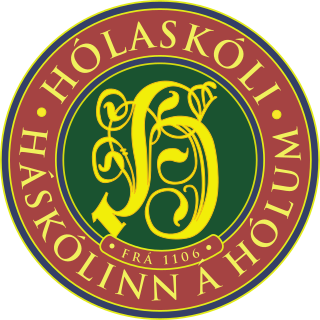
Hólar University is located in Hólar, Iceland, an important historical centre of education. The university was the first post-secondary school in Hólar, founded in 1106. It was renamed Hólar Agricultural College in 1882 and became Hólar University in 2007. Established in the 12th century, Hólar is one of the oldest universities in Europe; the oldest is University of Bologna since 1088 AD.
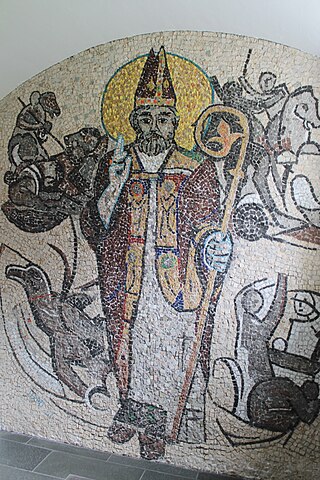
Jón Arason was an Icelandic Roman Catholic bishop and poet, who was executed in his struggle against the Reformation in Iceland.

The Catholic Church in Iceland is part of the Catholic Church, under the spiritual leadership of the Pope. The island is served by a single diocese, the Diocese of Reykjavík, having a total of seven parishes. As of 2015, the ordinary is bishop Dávid Bartimej Tencer. The diocese is directly subject to the Holy See.

The Diocese of Skálholt is a suffragan diocese of the Church of Iceland. It was the estate of the first bishop in Iceland, Isleifr Gizurarson, who became bishop in 1056.. His son, Gizurr, donated it to become the official see. The Diocese was amalgamated in 1801 and now forms part of the Diocese of Iceland under the leadership of the Bishop of Iceland. In 1909, the diocese was restored as a suffragan see, with the Bishop of Skálholt being a suffragan bishop to the Bishop of Iceland.

Ragnheiður Jónsdóttir (1646–1715) was a wealthy member of the powerful Svalbarðsætt family. She was married twice, each time to a Lutheran bishop of Hólar: Gísli Þorláksson and Einar Þorsteinsson. She survived both husbands and retired in 1685 to the farm of Gröf in Höfðaströnd, just south of the modern-day village of Hofsós, appointing her younger brother Oddur as ráðsmaður.
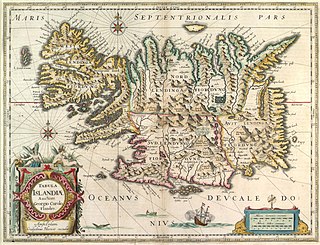
The Icelandic Reformation took place in the middle of the 16th century. Iceland was at this time a territory ruled by Denmark-Norway, and Lutheran religious reform was imposed on the Icelanders by King Christian III of Denmark. Resistance to the Icelandic Reformation ended with the execution of Jón Arason, Catholic bishop of Hólar, and his two sons, in 1550.
Gottskálk grimmi Nikulasson, was the Bishop of Hólar from May 1497 to 1520. He was the nephew of Ólafur Rögnvaldsson who preceded him as bishop. He was succeeded by Jón Arason (1484–1550), the last Roman Catholic bishop in Iceland prior to the restoration in 1923.
The bishops' saga is a genre of medieval Icelandic sagas, mostly thirteenth- and earlier fourteenth-century prose histories dealing with bishops of Iceland's two medieval dioceses of Skálholt and Hólar.
The Roman Catholic Diocese of Skálholt has been a titular see of the Catholic Church since 1968. It was the estate of the first bishop in Iceland, Isleifr Gizurarson, who became bishop in 1056. Christianity had been formally adopted in 1000. His son, Gizurr, donated it to become the official see of the Diocese. It ceased its functions as a Roman Catholic diocese with the Reformation.
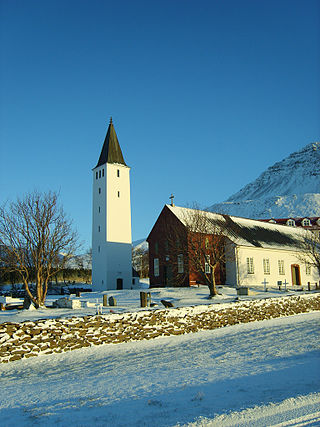
Hólar Cathedral is a Church of Iceland cathedral church located in Hólar, Iceland. The church is the official church of the Bishop of Hólar, currently Solveig Lára Guðmundsdóttir.

Geir Vídalín Jónsson was an Icelandic prelate who was the last diocesan Bishop of Skálholt from 1797 till 1801 when he became the first Bishop of Iceland.
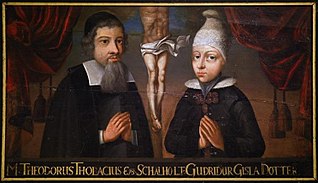
Þórður Þorláksson, also known by the Latinized name Theodorus Thorlacius, was the Lutheran bishop of Skálholt from 1674 until his death. Under Þórður's direction, the Church of Iceland's printing press was moved from Hólar í Hjaltadal to Skálholt where he established the first print archive in the country.
’Marteinn Einarsson was bishop of Skálholt from 1548 to 1556. He was the second Lutheran bishop and was directly involved in the Icelandic Reformation.
Einar Snorrason, called Einar Ölduhryggjarskáld, was a 16th-century Icelandic priest and poet whose family played a significant role in the Icelandic Reformation.

Gísli Þorláksson was an Icelandic bishop. He was a son of Þorlákur Skúlason and brother of Þórður Þorláksson.
Waysenhússbiblía, also referred to as the Vajsenhússbiblía, was the fourth complete Icelandic translation of the Bible, printed in 1747 by the Kongelige Vajsenhus's print shop in Copenhagen, Denmark. Waysenhús is the Icelandic version of vajsenhus. In 1727, the Vajsenhus was granted exclusive rights by Frederick IV of Denmark to publish the Bible in Denmark–Norway.












